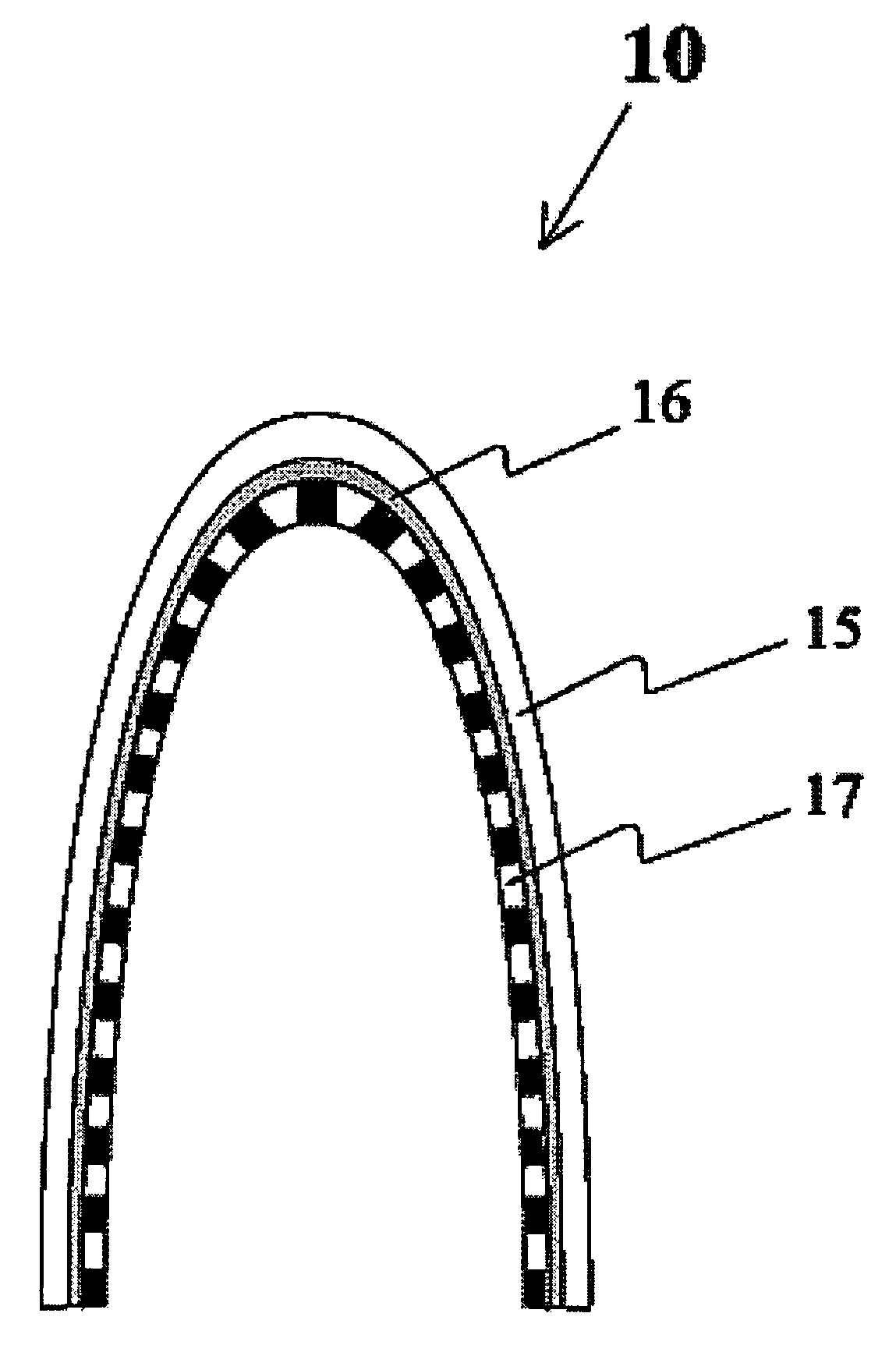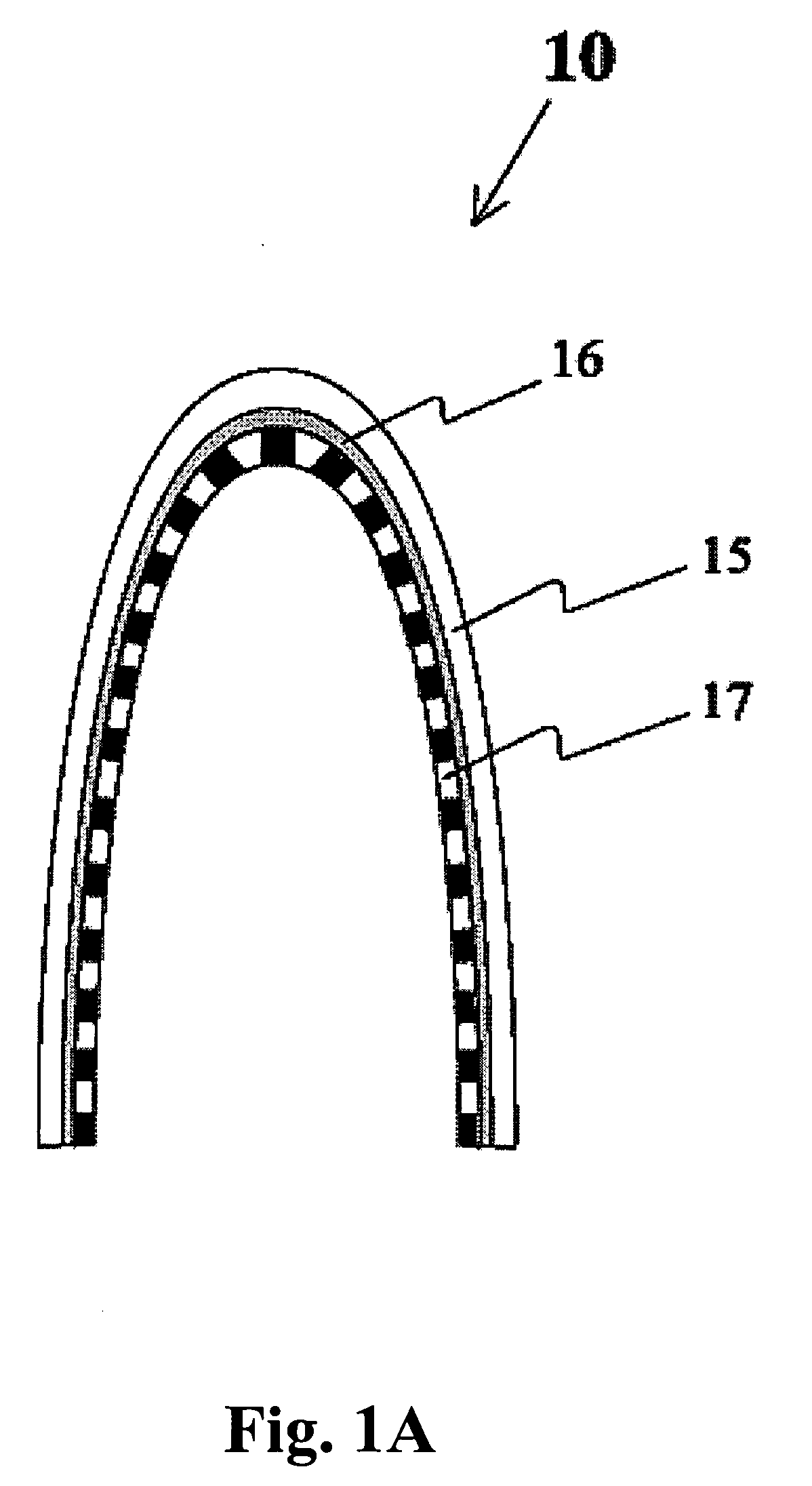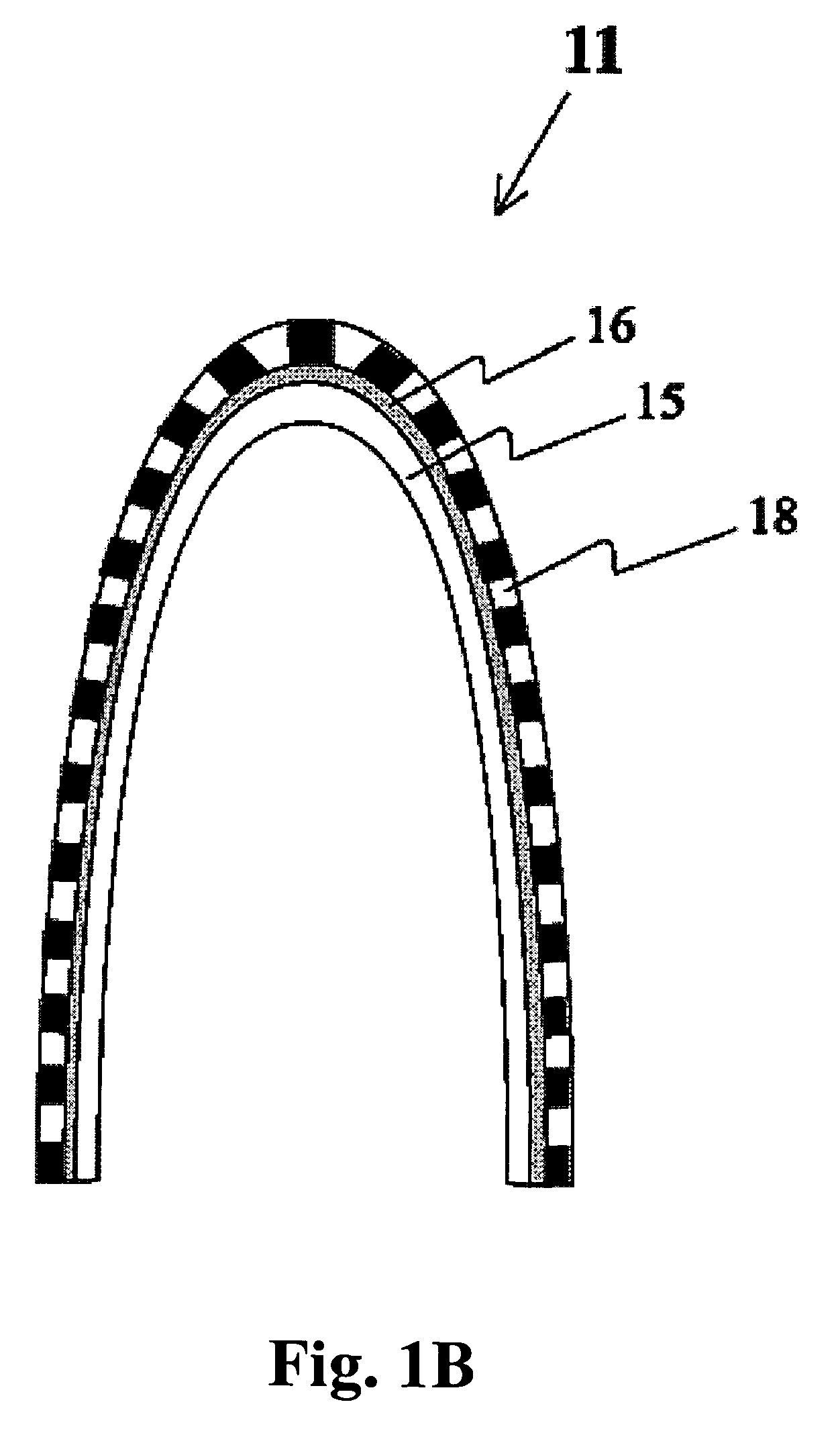Polymeric shell adherently supported by a liner and a method of manufacture
- Summary
- Abstract
- Description
- Claims
- Application Information
AI Technical Summary
Benefits of technology
Problems solved by technology
Method used
Image
Examples
example 1
[0101] A nitrile polymeric shell was prepared by conventional dipping in an aqueous latex emulsion, using a coagulant to gel the nitrile latex, and curing to crosslink the polymer. A layer of thermoplastic polyurethane adhesive was hot-melt sprayed on the nitrile polymeric shell by spraying approximately 3 grams of the adhesive for a pair of gloves. A conventional knitting process prepared a cotton liner. The liner was placed on the adhesive-coated polymeric shell and heated to 125° C. using an infrared heat source. The assembly was cooled. The liner was permanently bonded to the supporting knitted liner. The supported nitrile polymeric shell was kept in ambient moist air to cure and cross-link the thermoplastic polyurethane adhesive.
example 2
[0102] A strip from Example 1 was cut and evaluated for bond strength. The bond strength was measured using the test procedure BS EN IS02411:2000, “Rubber- or Plastics-Coated Fabrics. Determination of Coating Adhesive,” (B.S.I. Chiswick, High Road, London, United Kingdom). The peel strength was measured by literally peeling the liner apart from the polymeric shell. Each free end of the joined polymeric shell and liner was held in the jaws of a tensiometer, and opposing forces were applied to peel the two apart. The units of measurement are stated in Newton force (N) per 50 mm of peel width, that is, N / 50 mm width of peel line. The article was characterized by a minimum peel strength of 35 N / 50 mm width of peel line. More often, the peel strength exceeded 63 N / 50 mm width, and the peeled sections were characterized by fragmented liner still attached to the polymeric shell, indicating that the liner provided support to the polymeric shell until the supporting liner fragmented.
[0103] ...
PUM
| Property | Measurement | Unit |
|---|---|---|
| Fraction | aaaaa | aaaaa |
| Melting point | aaaaa | aaaaa |
| Electrical resistance | aaaaa | aaaaa |
Abstract
Description
Claims
Application Information
 Login to View More
Login to View More - R&D
- Intellectual Property
- Life Sciences
- Materials
- Tech Scout
- Unparalleled Data Quality
- Higher Quality Content
- 60% Fewer Hallucinations
Browse by: Latest US Patents, China's latest patents, Technical Efficacy Thesaurus, Application Domain, Technology Topic, Popular Technical Reports.
© 2025 PatSnap. All rights reserved.Legal|Privacy policy|Modern Slavery Act Transparency Statement|Sitemap|About US| Contact US: help@patsnap.com



